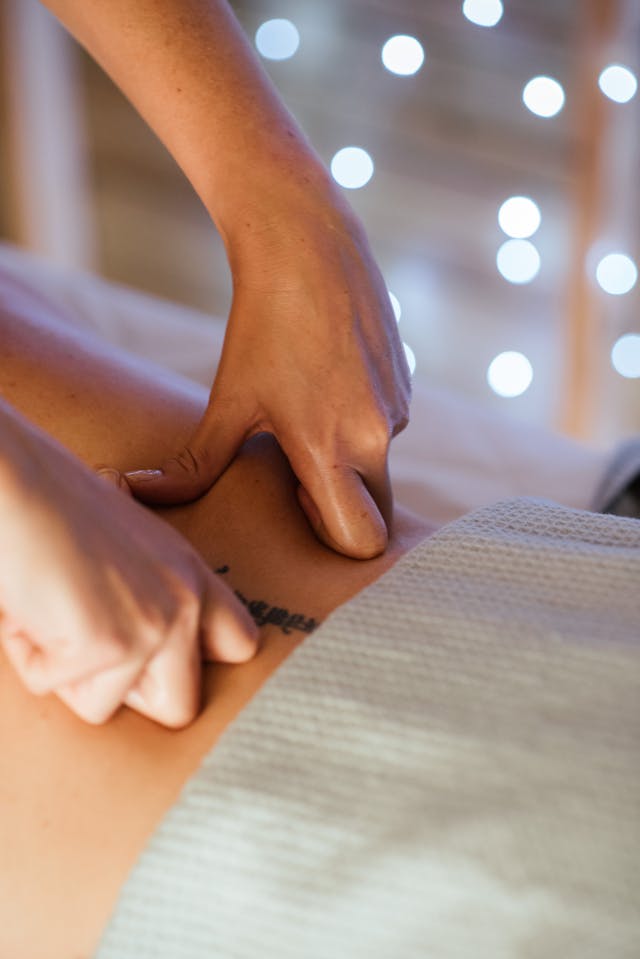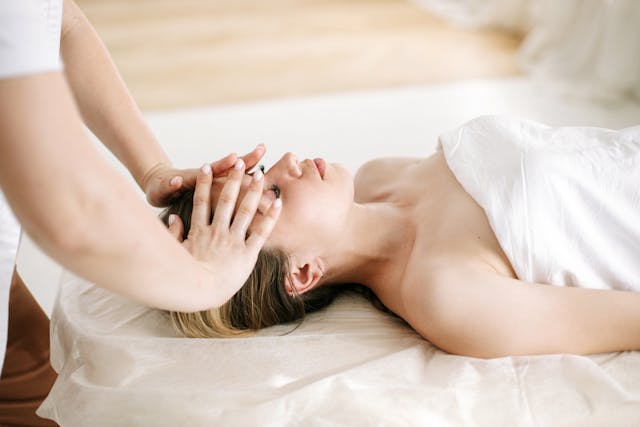Swedish massage is a highly regarded complementary therapy known for its benefits in alleviating physical ailments and enhancing mental health and well-being. Originating in Sweden in the early 19th century, this therapeutic practice was developed by Per Henrik Ling, a Swedish physiologist and fencing master. Ling’s method combined his knowledge of anatomy and physiology with his expertise in gymnastics and fencing, creating a systematic approach to massage that promoted health and healing. Historically, Swedish massage has been utilized by a wide range of individuals, from athletes seeking to improve performance and recovery to people with chronic conditions looking for pain relief and relaxation.

Swedish massage works by employing a variety of techniques including effleurage (long, gliding strokes), petrissage (kneading and squeezing), friction (deep circular movements), tapotement (rhythmic tapping), and vibration (shaking or trembling movements). These techniques are designed to manipulate the muscles and soft tissues of the body, enhancing blood circulation, relieving muscle tension, and promoting relaxation. Improved circulation helps deliver oxygen and nutrients to tissues, aiding in the removal of metabolic waste and toxins from the body. The gentle yet firm pressure used in Swedish massage also helps to break down adhesions and scar tissue, improving flexibility and range of motion.
The physical benefits of Swedish massage are extensive. It can provide relief from chronic pain conditions such as fibromyalgia, arthritis, and lower back pain. Athletes often use it to enhance performance, prevent injuries, and reduce recovery time after intense physical activities. For people with sedentary lifestyles or those who experience repetitive strain injuries, Swedish massage can alleviate tension and pain, promoting better posture and reducing the risk of further injury. Additionally, it is beneficial for improving the function of the lymphatic system, boosting immunity, and enhancing overall physical health.

The mental health benefits of Swedish massage are equally significant. The therapy promotes the release of endorphins, the body’s natural painkillers, and serotonin, a neurotransmitter that contributes to feelings of well-being and happiness. This biochemical response helps reduce stress, anxiety, and depression, creating a sense of calm and relaxation. The tactile stimulation from massage also encourages the release of oxytocin, a hormone associated with feelings of trust and bonding, further enhancing emotional well-being. Regular sessions can help improve sleep quality, reduce symptoms of insomnia, and foster a more positive outlook on life.
A typical Swedish massage session lasts between 60 to 90 minutes, during which the therapist tailors the treatment to address the client’s specific needs and preferences. Many people report feeling deeply relaxed, rejuvenated, and mentally clear after a session. The soothing atmosphere, combined with the therapist’s skilled touch, creates an experience that not only relieves physical discomfort but also promotes a profound sense of mental and emotional well-being. While a single session can provide immediate benefits, multiple sessions are often recommended to achieve and maintain optimal results. Regular massages can help manage chronic conditions, prevent stress buildup, and support long-term health and wellness goals.

Swedish massage is suitable for a wide range of individuals, regardless of age or physical condition. It can be adapted to accommodate various health needs and preferences, making it an ideal therapy for everyone from children to the elderly. However, it is essential for individuals with certain medical conditions, such as severe osteoporosis, blood clotting disorders, or contagious skin infections, to consult with their healthcare provider before undergoing massage therapy. Pregnant women can also benefit from modified Swedish massage techniques that are specifically designed to address the unique needs and challenges of pregnancy.
In summary, Swedish massage is a versatile and effective complementary therapy that offers numerous physical and mental health benefits. Its rich history and widespread use highlight its enduring appeal and effectiveness. Whether seeking relief from chronic pain, reducing stress and anxiety, or simply enjoying a moment of relaxation and self-care, Swedish massage provides a holistic approach to health and well-being. Regular sessions can help individuals achieve a balanced state of physical and mental harmony, promoting a higher quality of life and overall wellness.
Love Life x
References
- Field, Tiffany. “Massage Therapy Research Review.” Complementary Therapies in Clinical Practice, vol. 20, no. 4, 2014, pp. 224-229.
- Moyer, C. A., Rounds, J., & Hannum, J. W. “A Meta-Analysis of Massage Therapy Research.” Psychological Bulletin, vol. 130, no. 1, 2004, pp. 3-18.
- Ernst, E. “The Safety of Massage Therapy.” Rheumatology, vol. 42, no. 9, 2003, pp. 1101-1106.
- Cambron, J. A., Dexheimer, J., Coe, P., & Swenson, R. “Effects of a Single Session of Swedish Massage on Hypotension.” Journal of Bodywork and Movement Therapies, vol. 10, no. 3, 2006, pp. 221-228.
- Sherwin, D. S. “A History of Massage: An Illustrated Survey from Around the World.” Healing Arts Press, 1998.
- Weinberg, R. S., & Gould, D. “Foundations of Sport and Exercise Psychology.” Human Kinetics, 2011.
- Ernst, E., & Pittler, M. H. “Efficacy of Massage Therapy for Musculoskeletal Pain: A Systematic Review of Randomized Controlled Trials.” International Journal of Clinical Practice, vol. 50, no. 1, 1996, pp. 1-16.
- Rapaport, M. H., Schettler, P., & Bresee, C. “A Preliminary Study of the Effects of a Single Session of Swedish Massage on Hypothalamic-Pituitary-Adrenal and Immune Function in Normal Individuals.” The Journal of Alternative and Complementary Medicine, vol. 16, no. 10, 2010, pp. 1079-1088.

